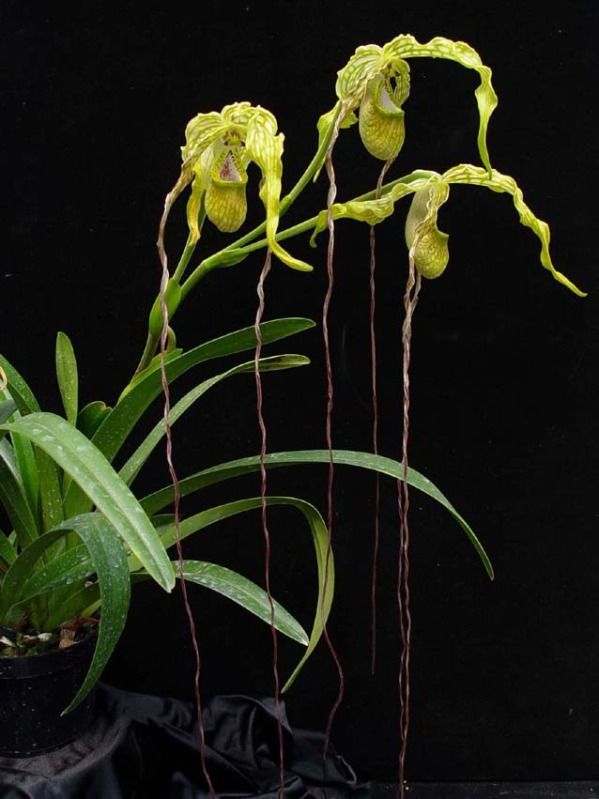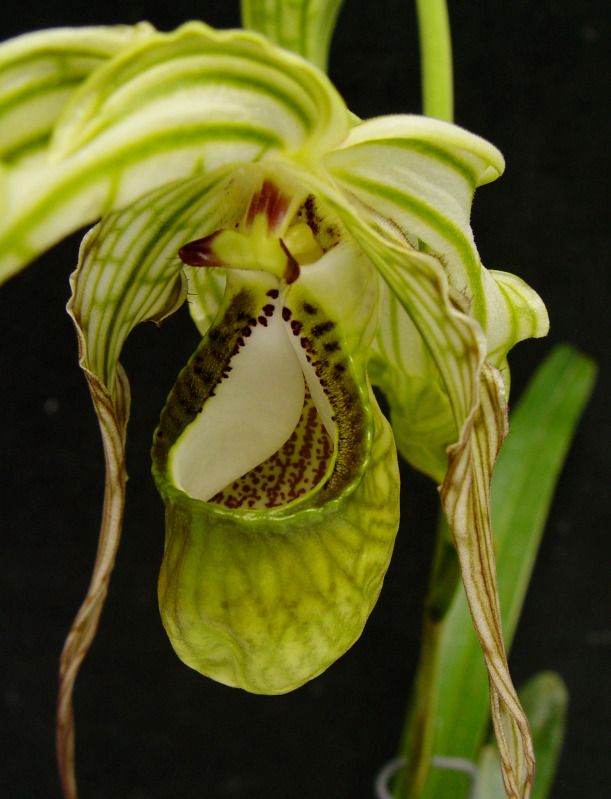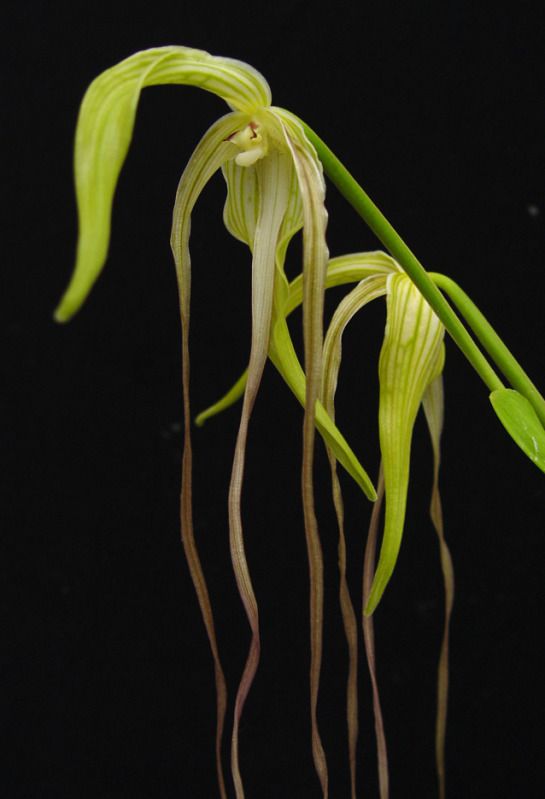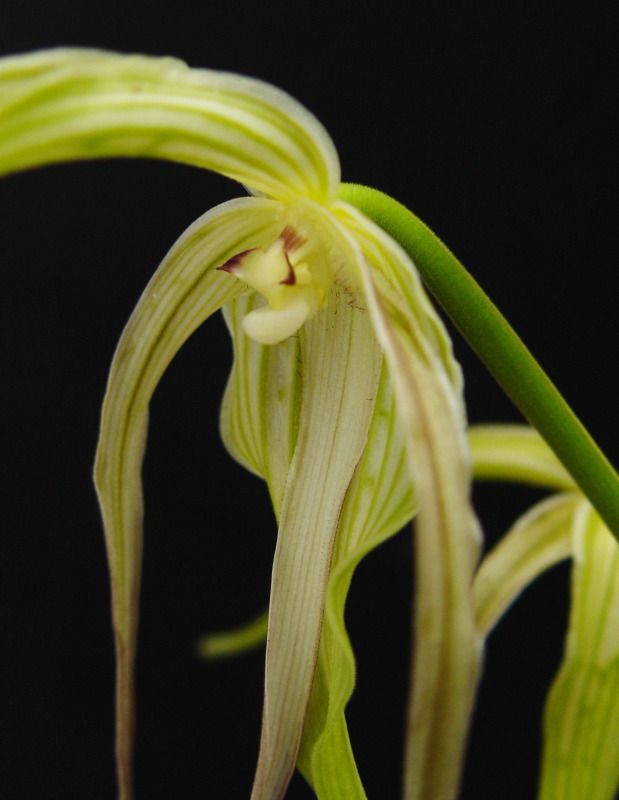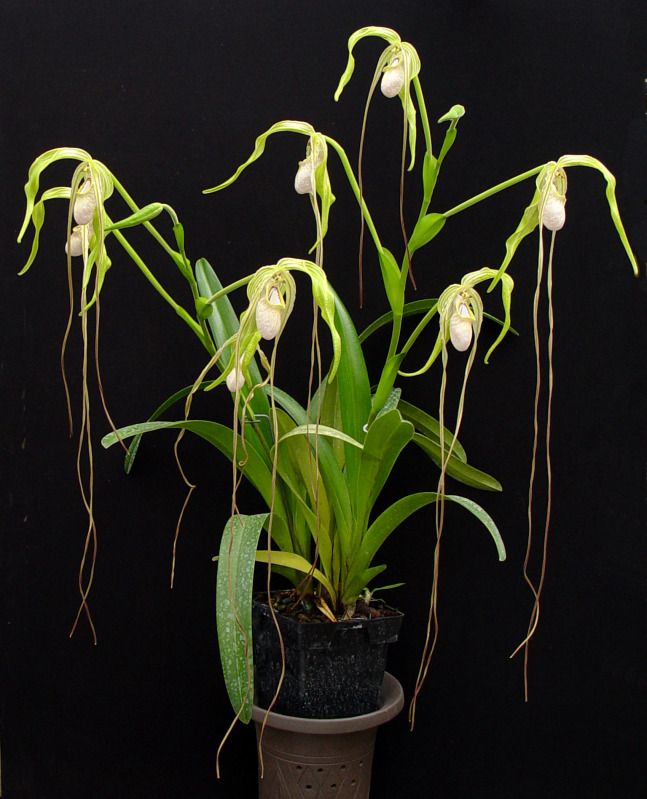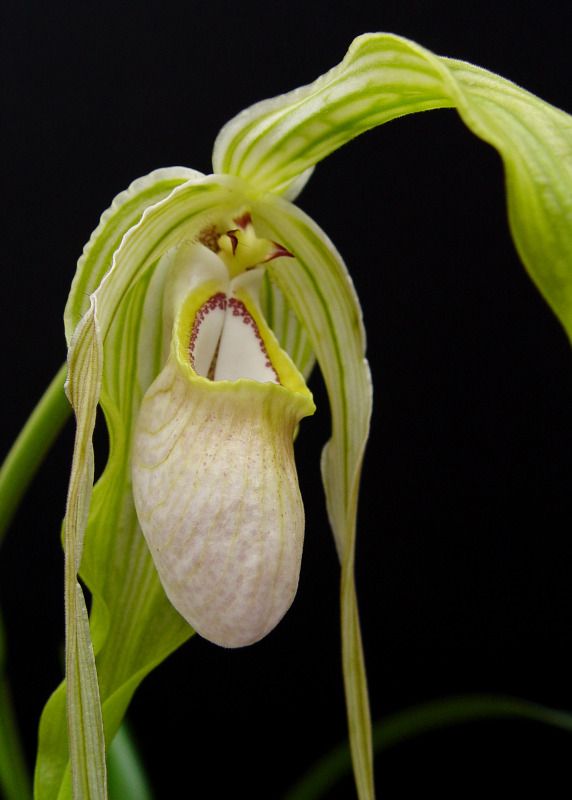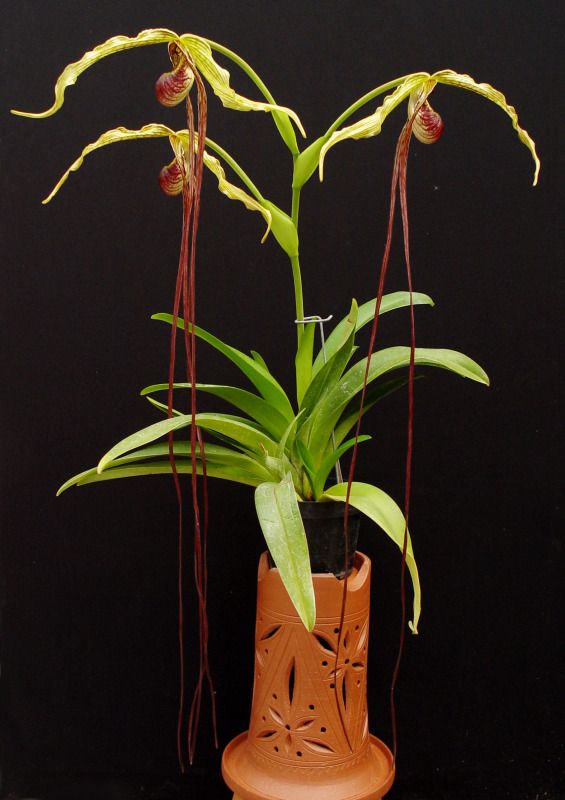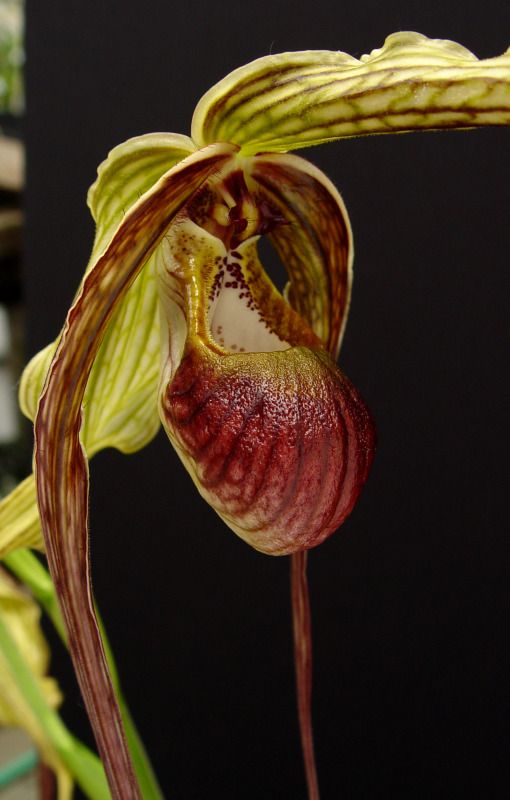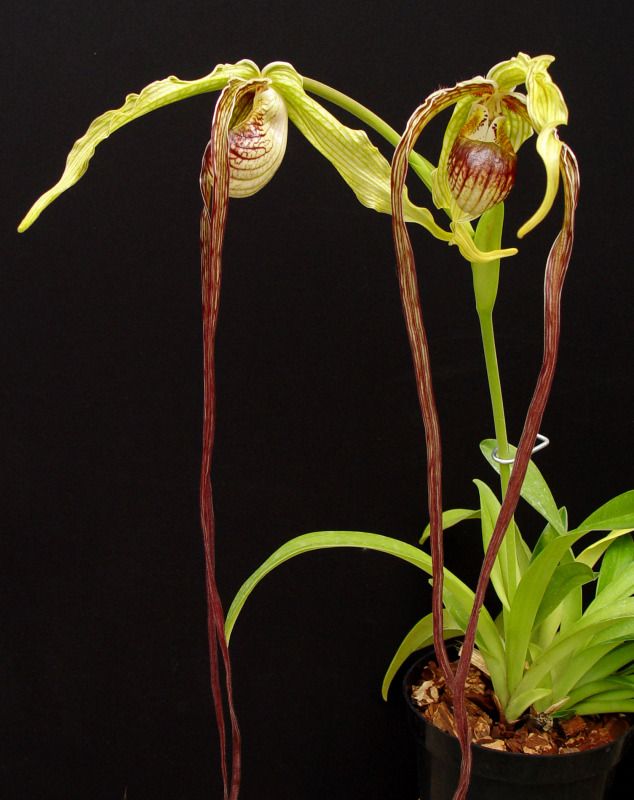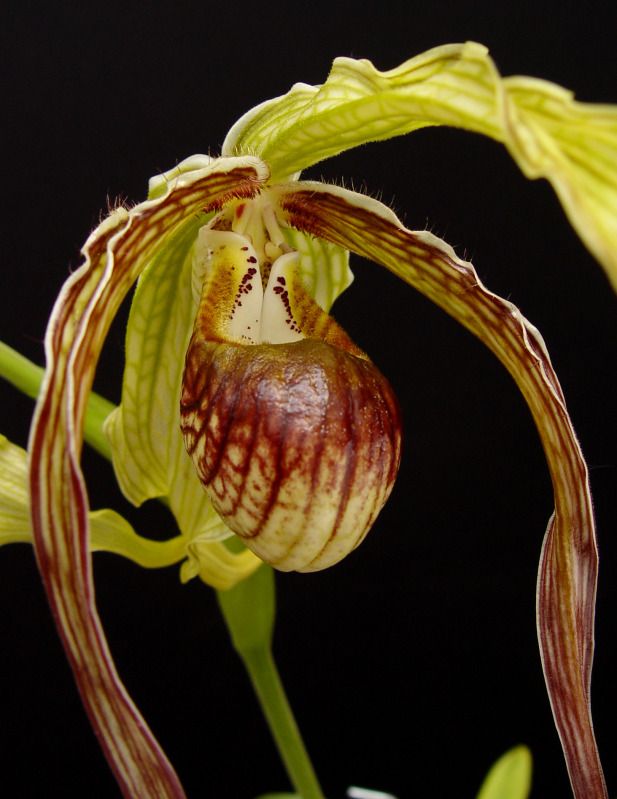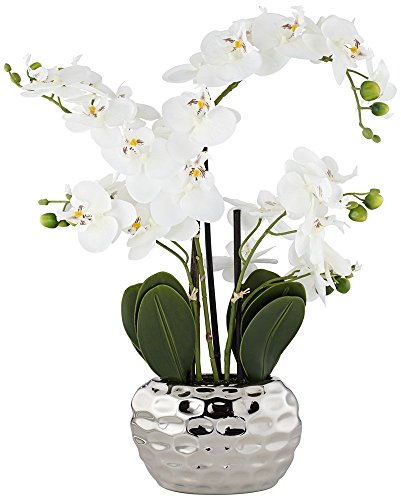D
Drorchid
Guest
I posted this in a different thread, but I thought it would be more appropriate here:
DNA would not solve anything in this case. Unlike with some other orchids, it is very clear what the individual "taxa" are, there is just a lot of confusion/fighting of what to call/name each taxa; it all boils down to priority. Who ever named a species first, gets priority. Unfortunately the individual taxonomists are unclear of which names gets priority.
DNA does help when we are unclear to say within what species a certain population belongs, this is usually the case when we are dealing with a a very variable species that grows in a large area. Sometimes we are dealing with 2 distinct species that have introgressed with each other. An example of such would be the Paph. godefroyae/leuchochilum/ang-thong/niveum complex. In this case DNA would be helpful as when an individual population is found that does not really fit with either species (say an ang-thong type) it will tell you to which species it belongs, or if it is of hybrid origin.
In the case of Phrag. caudatum and it's relatives it is clear that there are 5 distinct taxa, that are all very easily distinguishable from each other. In my opinion we are dealing with 3 separate species.
The first is: Phrag caudatum. This species is native to Peru and Ecuador.
The second is the lighter colored species: Phrag. lindenii. It has 2 distinct subspecies. As the subspecies with no pouch was described first, the name of the species had priority and it should be Phrag. lindenii. The other subspecies within this species is Phrag. lindenii subspecies wallisii. Unlike Phrag. lindenii subspecies lindenii it has a pouch. Both subspecies are native to mainly Colombia, Venezuela and Ecuador (also found in a little area of Northern Peru).
The third species (and this one has caused the most confusion when it comes to naming it), is native to Central America (Mexico, Panama, Costa Rica, Guatemala, Honduras): Phrag. warscewiczii. It has the darkest flowers of any of the long-petaled species. I am going by Christenson, and calling it Phrag. warscewiczii. Again there are two distinct subspecies. The first has normal flowers and is called Phrag. warscewiczii subspecies warscewiczii (synonym of Phrag. popowii). The second subspecies only grows in a very small area of Southern Mexico, and lacks a staminodal shield. Also this subspecies unlike its sister subspecies will self-pollinate. This subspecies is called Phrag. warscewiczii subspecies exstaminodium.
Hope this helps!
Robert
So what will happen when they do DNA of Phrags?! It would be nice if they could clear this up.
DNA would not solve anything in this case. Unlike with some other orchids, it is very clear what the individual "taxa" are, there is just a lot of confusion/fighting of what to call/name each taxa; it all boils down to priority. Who ever named a species first, gets priority. Unfortunately the individual taxonomists are unclear of which names gets priority.
DNA does help when we are unclear to say within what species a certain population belongs, this is usually the case when we are dealing with a a very variable species that grows in a large area. Sometimes we are dealing with 2 distinct species that have introgressed with each other. An example of such would be the Paph. godefroyae/leuchochilum/ang-thong/niveum complex. In this case DNA would be helpful as when an individual population is found that does not really fit with either species (say an ang-thong type) it will tell you to which species it belongs, or if it is of hybrid origin.
In the case of Phrag. caudatum and it's relatives it is clear that there are 5 distinct taxa, that are all very easily distinguishable from each other. In my opinion we are dealing with 3 separate species.
The first is: Phrag caudatum. This species is native to Peru and Ecuador.
The second is the lighter colored species: Phrag. lindenii. It has 2 distinct subspecies. As the subspecies with no pouch was described first, the name of the species had priority and it should be Phrag. lindenii. The other subspecies within this species is Phrag. lindenii subspecies wallisii. Unlike Phrag. lindenii subspecies lindenii it has a pouch. Both subspecies are native to mainly Colombia, Venezuela and Ecuador (also found in a little area of Northern Peru).
The third species (and this one has caused the most confusion when it comes to naming it), is native to Central America (Mexico, Panama, Costa Rica, Guatemala, Honduras): Phrag. warscewiczii. It has the darkest flowers of any of the long-petaled species. I am going by Christenson, and calling it Phrag. warscewiczii. Again there are two distinct subspecies. The first has normal flowers and is called Phrag. warscewiczii subspecies warscewiczii (synonym of Phrag. popowii). The second subspecies only grows in a very small area of Southern Mexico, and lacks a staminodal shield. Also this subspecies unlike its sister subspecies will self-pollinate. This subspecies is called Phrag. warscewiczii subspecies exstaminodium.
Hope this helps!
Robert
Last edited by a moderator:




